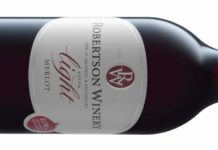The craft beer culture into South Africa’s beer-loving communities has no doubt caused a pleasant stir. Craft beer has accelerated the extraordinary growth of beer, and any regular old beer enthusiast is probably inclined to a natural yearning for the best of the most unique flavours.
“It is definitely all about the flavours,” said Shaun Kiley and Tol Booyens.
What started out as a hobby for this son- and father-in-law became a new challenge with every batch.
Let us first explain what craft beer is.
According to the American Brewers Association, a craft brewer is small, independent and traditional. Small, being less than six million barrels. Independent, meaning less than 25% is owned and controlled by an alcoholic beverage industry member who is not themselves a craft brewer. Traditional, indicating a brewer who has an all malt flagship beer or at least 50% of their volume is all malt, or beers that use adjuncts (extras added to beers) to enhance, rather than lighten flavour. Wikipedia explains it easier, “Craft beer is a beer not brewed by a mega brewery or alcoholic beverage corporation”.
Flavour is single handedly the biggest differentiator between craft and commercial brewing.
Beer is made from four basic ingredients: Barley (or other grains), water, hops and yeast. The basic idea is to extract the sugars from grains so the yeast can convert it to alcohol and CO2, creating beer.
“Brewing is a combination of science and art,” Shaun said.
“Using the basic scientific process we express creativity by varying the combinations of grains, hops and yeast that results in a multitude of styles.”
The first step begins with a cereal grain. Although barley is the most popular, wheat, rye and other grains are also used. Once the grains are harvested, the seeds are run through a malting process. The purpose is to start the seed germinating as if it were going to grow. Germination activates starch enzymes necessary to create fermentable sugars when the yeast is added later in the process.
However, the germination must be stopped at the right time. Once the germination is stopped, the grains are dried through kilning back to three to five percent moisture content. The last stage is roasting the grains. Maltsters – experts in creating various malted grains – determine the kind of roasting.
Once the grains are malted, the next step is to steep them again in hot water. This process, known as mashing, activates the starch enzymes in the grain, which cause it to break down and release sugar. The water is then drained and leaves a sweet, syrupy liquid known as wort. Once wort has been created and the lautering is complete, hops and other spices are added.
Beer is divided into two groups as well – ales and lagers. The type of yeast used and the fermentation process determines these two groups.
After the hops are added and the boiling is finished, the liquid goes to a fermenting vessel and yeast is added. Although there are more than 1 500 varieties of yeast, there are two different types of yeast used for craft beer: top cropping and bottom cropping. Yeast is a living, single-cell microorganism that is classified as fungi. Once the yeast is added, it begins to break down the sugars and create both alcohol and carbonization (CO2).
Ales are fermented at a warmer temperature around 64 degrees and can be ready to drink within three weeks. In traditional brewing, the yeast used in ales causes foam at the top of the tank from which it derives its name, top cropping (fermenting).
Lager is the German word, ‘to store.’ Lagers are fermented at a cooler temperature around 50 degrees and then stored (lagered) for several weeks or months at temperatures near freezing. The type of yeast used in this process settles at the bottom of the tank and is called bottom cropping (fermenting).
“This sounds very complicated, but it actually is a lot of fun,” Tol said.
“Beer should be soft and lingering on the tongue with a hint of bitterness that reminds you of its origin,” Tol said.
Shaun and Tol smiled at each other and agreed the proof of the pudding is in the taste.
“We brew on Thursdays and then comes the very hard part, we have to taste it. Sometimes the taste does not come through before the third or fourth bottle,” Tol said as he winked.
Their favourite is the Golden Wildebees, the flagship of their beers.
If you are keen on trying craft beer, you have to make a turn at Big 5 Guesthouse in Woltemade Street during their Christmas in July celebrations and their October fest later this year.
If you want to know more about the art of craft beer call 013 656 4646.






